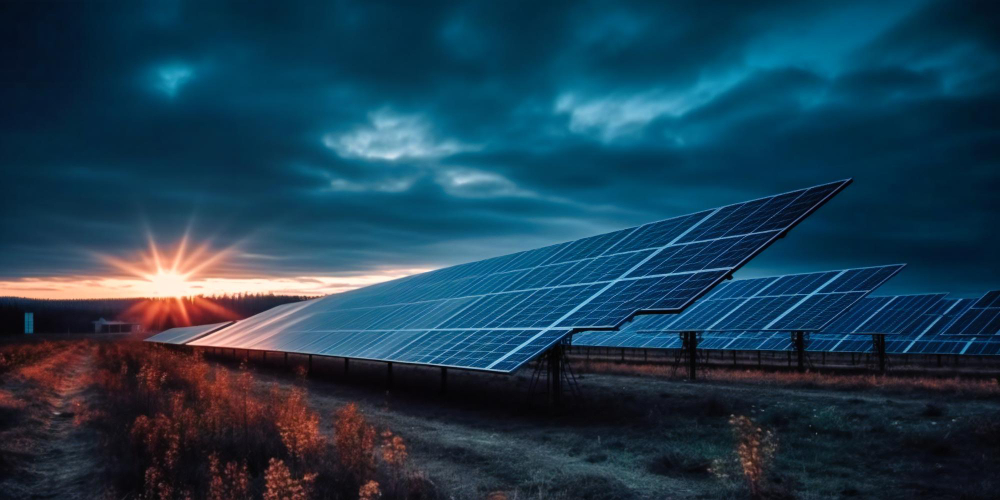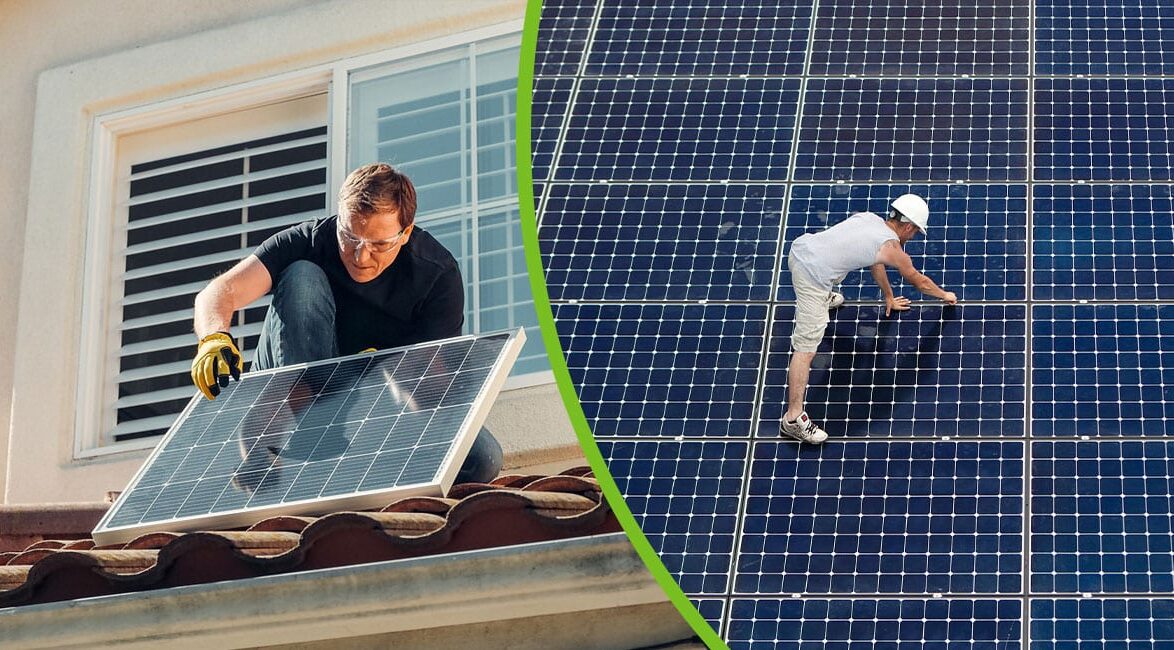Monocrystalline Vs Polycrystalline An Overview About !
Monocrystalline Vs Polycrystalline Solar panel and What is Difference and Which is Best ? When it comes to choosing solar panels for your home or business, the decision can often feel overwhelming. Among Monocrystalline Vs Polycrystalline the primary choices available, monocrystalline and polycrystalline solar panels are two of the most common options. Understanding their differences, advantages, and disadvantages between Monocrystalline Vs Polycrystalline is crucial for making an informed decision that aligns with your energy needs and budget. In this guide, we’ll break down everything you need to know about Monocrystalline Vs Polycrystalline solar panels, and helping you determine which type is the best fit for your solar energy system. Monocrystalline Vs Polycrystalline ?
What Are Monocrystalline Solar Panels ?

Monocrystalline solar panels are made from a single continuous crystal structure. These panels are created from pure silicon, which is melted and then formed into cylindrical shapes. From these cylinders, thin wafers are cut to produce the individual solar cells.
Key Characteristics:
- High Efficiency: Monocrystalline panels typically have higher efficiency rates, often between 15% and 20%. This means they can convert more sunlight into electricity compared to polycrystalline panels.
- Longevity: They tend to have a longer lifespan and come with a longer warranty period, often around 25 years.
- Aesthetic Appeal: Monocrystalline panels are generally black and have a sleek, uniform appearance that some find more visually appealing.
- Performance in Low Light: They perform better in low-light conditions and high-temperature environments due to their higher efficiency and lower temperature coefficient.
Monocrystalline panels feature a sleek black design and higher efficiency, making them ideal for limited spaces and bigger budgets. In contrast, polycrystalline panels have a blue hue and are more affordable, suitable for larger areas and tighter budgets. Choose based on your space, budget, and performance needs.
What Are Polycrystalline Solar Panels ?

Polycrystalline solar panels are made from silicon crystals that are melted together to form a single batch of silicon. The silicon is then cut into wafers to produce the solar cells.
Key Characteristics:
- Lower Efficiency: Polycrystalline panels usually have a lower efficiency rate, typically between 13% and 16%. This means they require more space to produce the same amount of energy as monocrystalline panels.
- Cost-Effective: They are generally less expensive to produce, which translates to a lower price for consumers.
- Appearance: Polycrystalline panels are usually blue and have a speckled, non-uniform appearance. This can be less aesthetically pleasing to some.
- Performance in High Temperatures: They tend to have a higher temperature coefficient, which means their performance can degrade more in high temperatures compared to monocrystalline panels.


Key Differences Between Monocrystalline Vs Polycrystalline Solar Panels

Efficiency:
- Monocrystalline: Higher efficiency, meaning more power generation per square meter.
- Polycrystalline: Lower efficiency, requiring more space for the same power output.
Cost:
- Monocrystalline: Generally more expensive due to the complex manufacturing process.
- Polycrystalline: More affordable, offering a lower upfront cost.
Aesthetics:
- Monocrystalline: Sleek, black panels that blend well with rooftops.
- Polycrystalline: Blue panels with a speckled appearance.
Durability and Longevity:
- Monocrystalline: Longer lifespan and typically better warranties.
- Polycrystalline: Slightly shorter lifespan, but still reliable.
Performance in Low Light and High Temperatures:
- Monocrystalline: Better performance in low light and high temperatures.
- Polycrystalline: Performance can degrade more in these conditions.
Which Is the Best Option for You ? Monocrystalline Vs Polycrystalline
1.Space Considerations: If you have limited roof space or need to maximize energy production from a small area, monocrystalline panels are the better choice due to their higher efficiency.
2. Budget Constraints: If cost is a major factor and you have sufficient space for installation, polycrystalline panels offer a more budget-friendly option without a significant sacrifice in energy output.
3. Aesthetic Preferences: If the appearance of the panels is important to you, monocrystalline panels’ sleek, black design might be more appealing.
4. Climate Considerations: In regions with extreme temperatures or less sunlight, monocrystalline panels tend to perform better, making them a preferable choice.
1.Space Considerations: If you have limited roof space or need to maximize energy production from a small area, monocrystalline panels are the better choice due to their higher efficiency.
2. Budget Constraints: If cost is a major factor and you have sufficient space for installation, polycrystalline panels offer a more budget-friendly option without a significant sacrifice in energy output.
3. Aesthetic Preferences: If the appearance of the panels is important to you, monocrystalline panels’ sleek, black design might be more appealing.
4. Climate Considerations: In regions with extreme temperatures or less sunlight, monocrystalline panels tend to perform better, making them a preferable choice.
Conclusion On Monocrystalline Vs Polycrystalline !
Choosing between Monocrystalline Vs Polycrystalline solar panels depends on your specific needs and circumstances. Monocrystalline panels offer higher efficiency, better performance in low light and high temperatures, and a more modern aesthetic, making them ideal for those who want the best performance and are willing to invest more. On the other hand, polycrystalline panels provide a more cost-effective solution with a slightly lower efficiency and a unique appearance, suitable for those on a tighter budget or with more space the choice is yours
While Selecting Monocrystalline Vs Polycrystalline By weighing the characteristics and benefits of each Monocrystalline Vs Polycrystalline and type, you can make an informed decision that will optimize your solar energy system’s performance and suit your personal preferences and financial situation in Monocrystalline Vs Polycrystalline solar panels







Leave a Comment
Your email address will not be published. Required fields are marked *